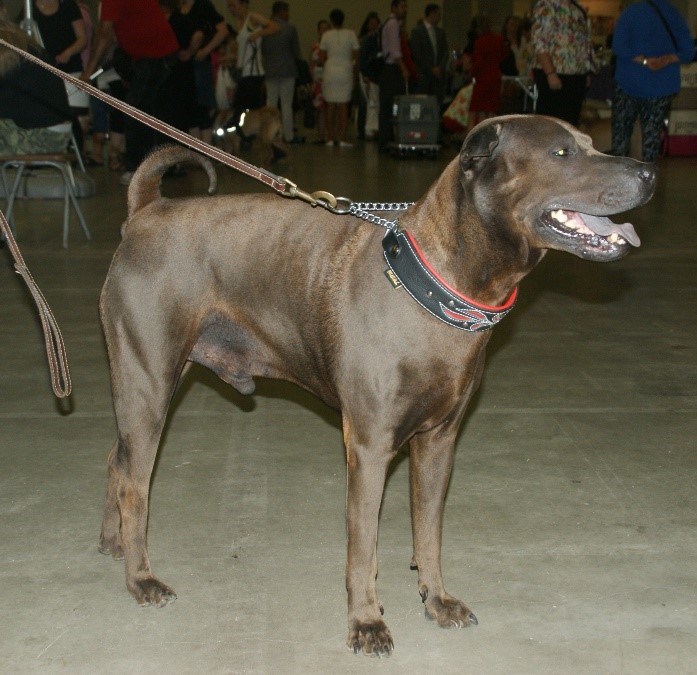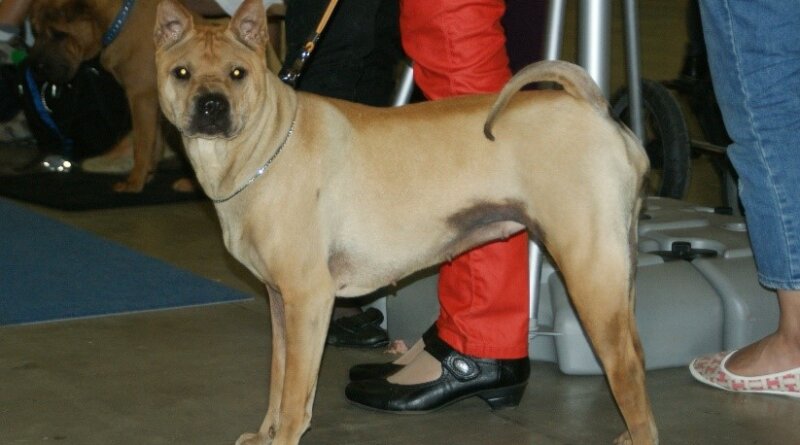Info, Pictures, Facts & History – Dogster
If this is the first time you’ve heard about the Bone-Mouth Shar Pei, you’re not alone. The Bone-Mouth is much like the Shar Pei that you’re familiar with, particularly in temperament, but they are different in appearance.
If you’re interested in learning more about the Bone-Mouth Shar Pei, we have all the information you need to know about these dogs!
Breed Overview
Colors:
Red, tan, fawn, black, cream, chocolate, apricot
Suitable for:
Families or single people in a house or apartment
Temperament:
Calm, devoted, independent, intelligent
The Bone-Mouth Shar Pei is known as a traditional Shar Pei. You can find them predominantly in the Eastern parts of the world. The Meat-Mouth Shar Pei is the wrinkled breed that usually springs to mind when you think of a Shar Pei. They are mainly in the Western parts of the world.
Bone-Mouth dogs are leaner and taller and have less of a “meatier” mouth. The Westernized Shar Pei, the Meat-Mouth, are stockier and shorter and have excessive wrinkles.
Bone-Mouth Shar Pei Characteristics
The Earliest Records of the Shar Pei in History
It’s believed the Chinese Shar Pei has been in existence since 200 B.C. (about 2,000 years ago), and they may have originated near the village of Tai Li in Guangdong province. Shar Pei were bred as guardians for the royal palace and the royal family, as well as for hunting.
They were also used for dogfighting; this is where the loose, wrinkled skin came in handy. It made it challenging for the other dogs to clamp down on the skin, which helped protect them from more serious injuries.

How the Shar Pei Gained Popularity
When China became a communist country in the 1940s, the government placed a heavy tax on all dogs and eventually slaughtered thousands of them. Consequently, the Shar Pei almost went extinct. They were named the rarest dog breed in the world by the Guinness Book of Records in the late 1960s and 1970s.
They were saved by a Shar Pei breeder from Hong Kong named Matgo Law, who turned to the entire world and asked for help. Life Magazine published an issue in January 1979 that featured a Shar Pei on the cover on the subject of rare dogs. Once the American public laid eyes on the Shar Pei, the demand for puppies soared, and the Shar Pei was saved.
As of 2023, the Shar Pei is the 68th most popular dog out of 200 breeds in the United States. This occurred in just a handful of decades!
Formal Recognition of the Shar Pei
The Chinese Shar Pei was formally recognized by the Fédération Cynologique Internationale in 1981 and the United Kennel Club in 1985.
The American Kennel Club (AKC) was late to the game compared to the other kennel clubs and only recognized the Shar Pei in 1992.
Top 6 Unique Facts About the Bone-Mouth Shar Pei
1. They are just a variation.
Both the Bone-Mouth and Meat-Mouth are Shar Pei. They are just different variants of the breed. The AKC doesn’t acknowledge the two different types of Shar Pei. But the Bone-Mouth is typically called the “Chinese variety,” and the Meat-Mouth is the “American variety.”
2. The name comes from the mouth shape.
The Bone-Mouth name comes from these Shar Pei having a “dry” mouth, whereas the Meat-Mouth has more loose skin and wrinkles around their mouths, so it’s considered “meatier.”
The Bone-Mouth is taller and leaner and has much less wrinkling on the face than the Meat-Mouth. The Bone-Mouth typically has wrinkling along the shoulders, neck, and forehead. The skin doesn’t look as heavy and loose as it does on the Meat-Mouth.
3. They were crossed because of the high demand.
It’s believed when the demand for the Shar Pei took off in North America, breeders in Hong Kong crossed the Bone-Mouth Shar Pei with Bulldogs, Pugs, Bull Terriers, and so on. This would help explain the obvious physical differences between the Bone-Mouth and Meat-Mouth.
4. They have black tongues.
Shar Pei have blue-black tongues like the Chow Chow. In Chinese folklore, it was believed that black tongues would ward off evil spirits and ghosts. It was also thought the tongues contributed to the viciousness of the dog’s appearance, which would be a valuable attribute in a guard dog.
5. Shar Pei means “sand skin”.
The name Shar Pei was given to these dogs as a way to refer to their skin. Considering their skin is what is so eye-catching, this shouldn’t come as a surprise. Shar Pei translates to “sand skin” because of the color and rough texture of their skin.
6. Shar Pei is both singular and plural.
You can have one Shar Pei, or you can have five Shar Pei. The name “Shar Pei” is both singular and plural.
Does the Bone-Mouth Shar Pei Make a Good Pet?
Temperament
The Bone-Mouth Shar Pei can make an excellent pet, but they are not for everyone. These dogs can be devoted and protective of their families but are also known to be stubborn and independent-minded. They tend to be a better fit for experienced dog owners.
If they are socialized well and raised alongside other pets, they can get along with them, but they are otherwise quite wary of other dogs and strangers. They are also known to become aggressive if they feel that they or their family is under threat.
Grooming
Grooming the Bone-Mouth is less challenging than the Meat-Mouth. The Bone-Mouth has far fewer wrinkles, so there is less cleaning to do between the skin folds. For both types, once you’ve cleaned the skin folds, it’s imperative that they are thoroughly dried.
But other than keeping the folds clean and staying on top of cleaning and checking their ears and the usual nail clipping and teeth cleaning, Shar Pei are easy to look after when it comes to their grooming needs.
Health
Meat-Mouth Shar Pei are prone to conditions like entropion, which is when the eyelid grows inward because of the excessive wrinkles and folds of skin. The Bone-Mouth is not as likely to suffer from this or other eye conditions commonly seen in the Meat-Mouth.
Meat-Mouth Shar Pei also are more prone to ear infections because they have narrow ear canals than the Bone-Mouth.
Conclusion
The Bone-Mouth Shar Pei has been given this unusual name because they have a narrower muzzle with fewer wrinkles and droopiness. So, their mouths are essentially “bone dry.”
The “Chinese version” of the Shar Pei is thought to be closer to their ancient ancestors. In contrast, the “American version” has had questionable breeding practices that have caused excessive folds in their skin.
Either way, the Shar Pei is a gorgeous breed with a fascinating history and temperament and an undoubtedly unique appearance.
Featured Image Credit: Traditional Shar Pei, Canarian, Wikimedia Commons CC SA 4.0 International





